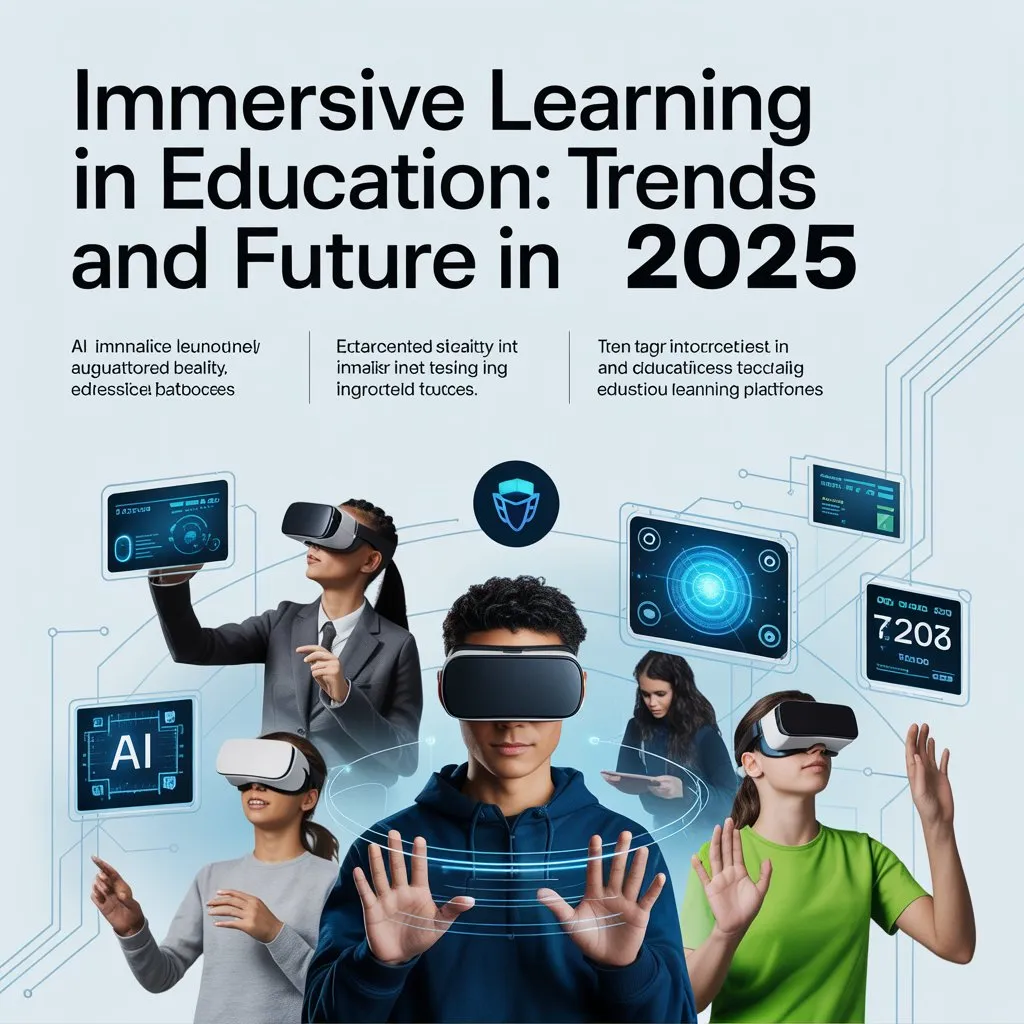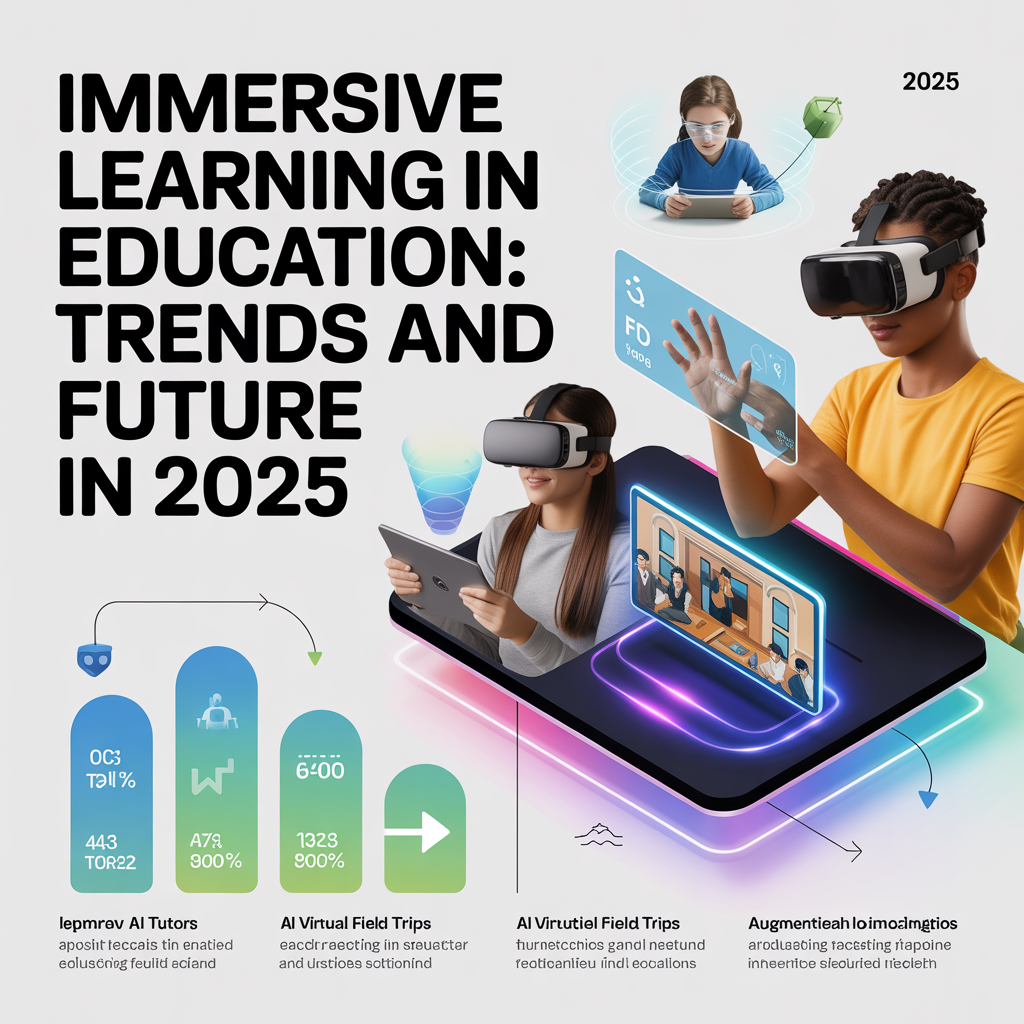Introduction
As we Know Immersive education is changing the way schools, colleges and universities instruct and students learn. With immersive tools such as virtual reality (VR), augmented reality (AR) and 360-degree videos becoming commonplace, educators must have a strong set of tools to engage learners in a deeper experience. The projected growth of the metaverse education market—a 43.76% CAGR between 2023 and 2030, equating to nearly USD 24.7 billion market by 2030—speaks to the degree in which the industry is taking the concept of immersive learning in education seriously.
In this article, we will present the rationale for educational institutions to begin implementing to immersive education, following recommendations for hybrid learning models in education to immerse learners.
1. The Evolution of Hybrid Learning and Immersive Learning in Education
Hybrid learning combines traditional face-to-face teaching and online learning, merging the benefits of being in the classroom with the flexibility of studying digitally. This approach primarily reflects previous constraints: traditional classroom environments often meant some students fell behind, and learning fully online did not have the social and interactive richness of the classroom for the time set.
Year after year, hybrid learning has called for innovation — from early e-learning and platforms such as Moodle and Blackboard to the mass adoption of tools such as Zoom, Microsoft Teams, and Google Classroom, more like which has been accelerated by the COVID-19 pandemic. STEM faculties have also been increasing the adoption of immersive technologies, such as PhET Interactive Simulations.
Now we see immersive learning in education — immersively integrating VR, AR, and interactive simulations — is now on the forefront of hybrid learning models. Hybrid models can be defined as immersive + blended learning, instead of just online + classroom approaches.
2. Why Schools Should Embrace Immersive Learning in Education
a) Personalised Learning with AI & Immersive Tech
Immersive learning in education allows for highly personalised experiences. AI-powered systems can monitor when a student struggles and dynamically adjust the learning path accordingly. Robots and codable devices can support hands-on tasks and problem-solving. This tailored approach meets learners where they are, whether advanced, visual, kinesthetic or needing extra support.
b) Enhanced Engagement via Gamification & Immersion
To full Case study Integrating gamification and immersive learning in education promotes motivation, engagement and retention. Students can engage in virtual laboratories, use AR “cubes” to manipulate 3D artifacts, or engage in VR role-play activities. These experiences enhance student engagement when compared to traditional lecture formats. Research demonstrates that immersive learning environments relate to improvements in attention, memory and problem solving abilities. ijrehc.com+1
c) Theory to Practice in Real-World Contexts
One of the most compelling benefits of immersive learning within education is that it can mimic real-life experience. This is true in medical, engineering, architecture and history: students will dissect virtual frogs, walk through an interactive 3D structure, or take a trip to a virtual field-trip. For hybrid education models, online and in-person sessions can blend immersive modules together, bringing the full design experience of the real world into any classroom although it is a disconnected experience.
d) Cost-Effectiveness and Scalable
as Tech you can read Tech Sites like Techcrunch.com While the start-up cost of hardware and software may appear steep at first, immersive learning in education will pay dividends over time. Reusable virtual reality modules, scalable augmented reality lessons and blended delivery de-emphasize the need for physical infrastructure, printed materials and fixed laboratory inventory. Institutions are recognizing these practices more and more within their annual
3. Implementing Immersive Learning in Education: Key Considerations
Select a suitable technology for your pedagogical objectives.
Consider whether the aim calls for deep immersion (VR) or contextual overlay (AR). For examples:
- Choose VR for deep immersion (e.g., virtual surgery, exploring an ecosystem).
- Choose AR for augmenting a physical classroom (e.g., visualising an engineering part).
Design for accessibility and diverse learners for new.
So for Immersive learning in education must address various learning styles (visual, kinesthetic, audio) while accommodating special-needs students. Make this design inclusive, include fallback options and ensure that the technology supports adaptive learning pathways.

Train teachers and embed pedagogically.
Successful immersive learning in education rests on the readiness of teachers. This requires you to invest in professional development and new Educational trends designing an immersive curriculum and your technology aligns with the learning outcomes. Start small, pilot some modules, evaluate them and scale.
Measure and refine, using data & feedback, not just anecdotally.
Leverage analytics and feedback loops to monitor how immersive learning in education affects learner retention, performance and engagement. Research has indicated improved outcomes but it has also indicated usability problems and problematic implementation issues..
4. The Future of Immersive Learning in Education Beyond 2025
Toward fully immersive metaverse schools
Imagine virtual campuses where students meet in 3D environments, collaborate, experiment and learn as avatars. Immersive learning in education is heading in this direction, with institutions already piloting VR-based courses and global virtual classrooms.
Automation, AI and neuro-technology in education
Hybrid schools may be become more automated: AI tutors, grading systems, and neurotechnology (e.g., EEG or brain-computer interfaces) could modify learning in real-time. In future education, immersive learning presumably fits into next-gen learning experiences and will be enhanced by these technologies.
Smart, interconnected classrooms driven through IoT & AIoT
Wearables and biometric sensors stats will be used to monitor student engagement, AI-enabled whiteboards will adapt during the class, and immersive modules would be triggered to design experiences unique to each student. The classroom of the future is a naturally occurring blending of online and offline experiences facilitated through immersive learning in education.
Conclusion
Immersive learning in education is more than a buzzword; it is a transformative movement. By aligning VR, AR, AI-powered personalization, and hybrid delivery, educational institutions can develop engaging, inclusive, and future-ready learning spaces and experiences. As the market continues to grow and technology becomes further accessible, the true question for schools and universities is simple: are you ready to lead?
As time pass when educators engage in immersive learning in education, they allow students to learn more deeply shown retain more, and develop skills for the future. And in doing so, educators can also create richer and more flexible experiences for students.



